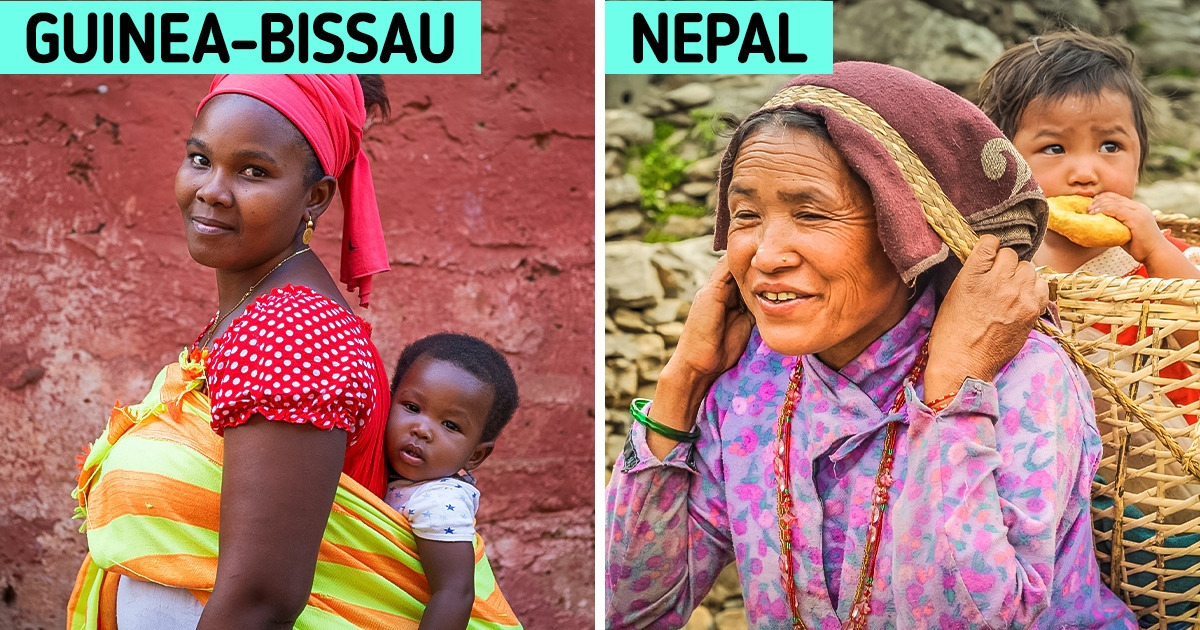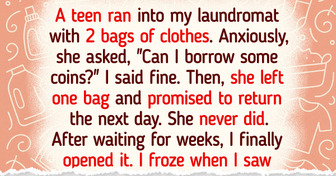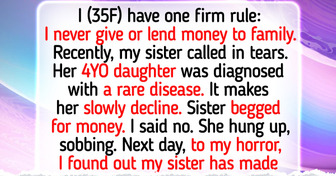20 People Who Were Lucky Enough to Meet Their Perfect Partner


Babies are born without the ability to care for themselves and rely on their mothers for safety, nutrition, and emotional bonding. However, mothers also have responsibilities outside of caring for their children, such as working to support their families and communities. To reconcile these competing demands, mothers have developed various solutions throughout history and across cultures. That’s why mothers deserve our full appreciation. Let’s see how mothers handle things in the following 8 countries today.
In some tribes of Africa, mothers carry their babies using lightweight wraps known as kangas. Kangas are characterized by a colorful border design with a more straightforward pattern in the center. Mothers use kangas to carry their babies on their backs by wrapping them around their bodies like a towel, then rolling them up on their chests and tying the ends to secure the baby. Once the baby is old enough to walk, the kangas can be repurposed for other uses, such as aprons or towels.
In Mozambique, mothers have a traditional way of carrying their infants using a cloth called a capulana. This versatile fabric can serve multiple purposes, as it can be worn as a skirt, veil, or shawl to carry belongings, as well as a sling to hold the baby. The capulana is said to have originated in India and was brought to Africa through trade routes. It is a common gift for new mothers and comes in various colorful and lively patterns.
One unique aspect of motherhood in China is the practice of zuò yuè zi, which translates to “sitting the month.” This tradition involves the mother and baby staying in the hospital or at home for the first month after birth to protect the newborn’s health. During this time, the mother follows strict dietary restrictions and is not allowed to wash her hair or take a shower. This practice is rooted in traditional Chinese beliefs about postpartum recovery and is still commonly followed today.
Mother’s Day in Peru is a significant tradition celebrated for an entire week. Families come together for events, cultural and artistic performances, and get free admission to museums and festivals. Children show their appreciation with gifts, flowers, and poetry. It also includes honoring deceased mothers by visiting graves and offering flowers and balloons. It’s a week-long celebration of maternal love and bonding.
Mother’s Day in Italy is known as La Festa della Mamma, celebrated on the second Sunday of May. Italian mothers are highly valued and celebrated throughout the year, but on Mother’s Day, they are especially pampered and appreciated. Celebrations are simple and typically involve family members getting together, giving small gifts, fresh flowers, and handwritten poetry.
Another way that mothers around the world carry their babies is through the use of baskets, which while heavier and more cumbersome, are an effective way to transport babies while keeping the mothers’ hands free. In Nepal, it is common for mothers to carry their little ones in wicker baskets that are strapped to the head.
Mother’s Day in Sweden is celebrated on the last Sunday of May. It was adopted in 1919 and it includes traditional activities, such as flying the Swedish flag, preparing breakfast in bed, making handmade cards, picking wild daffodils, and spending time outdoors, and mothers might be treated to a special song.
In Armenia, the period from March 8 to April 7 is referred to as “the women’s month,” during which the beauty and femininity of women are celebrated with special attention and love. While it is commonly believed that a man should show care and love to his loved ones without any specific reason, it is acknowledged that on holidays, women especially deserve to be recognized and celebrated.
What does motherhood look like in your country? What makes it so special? Share your thoughts in the comments!











